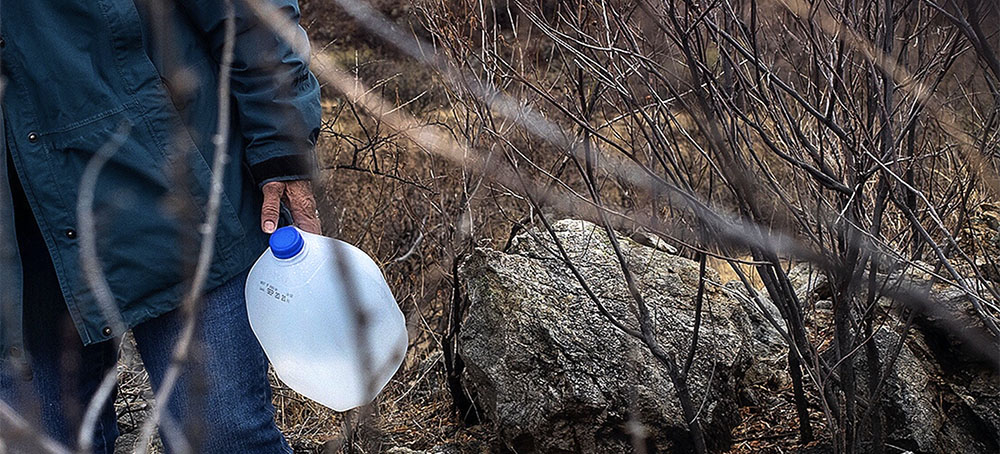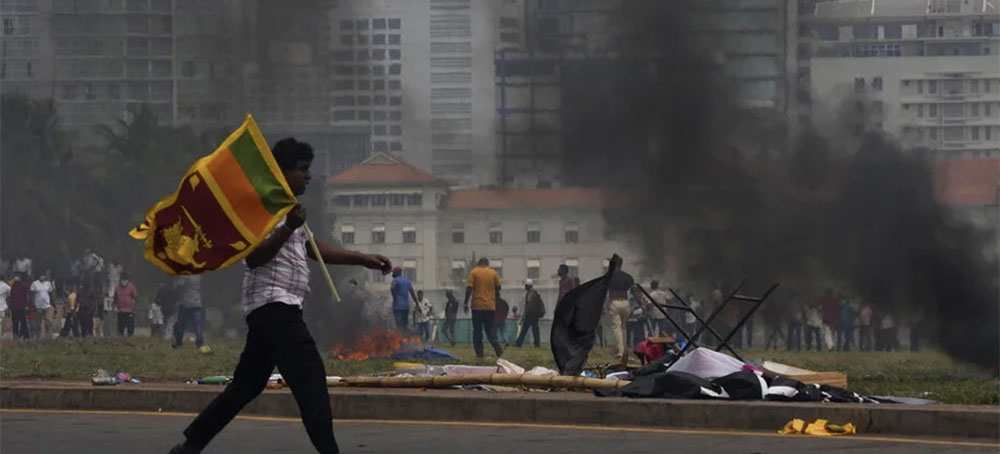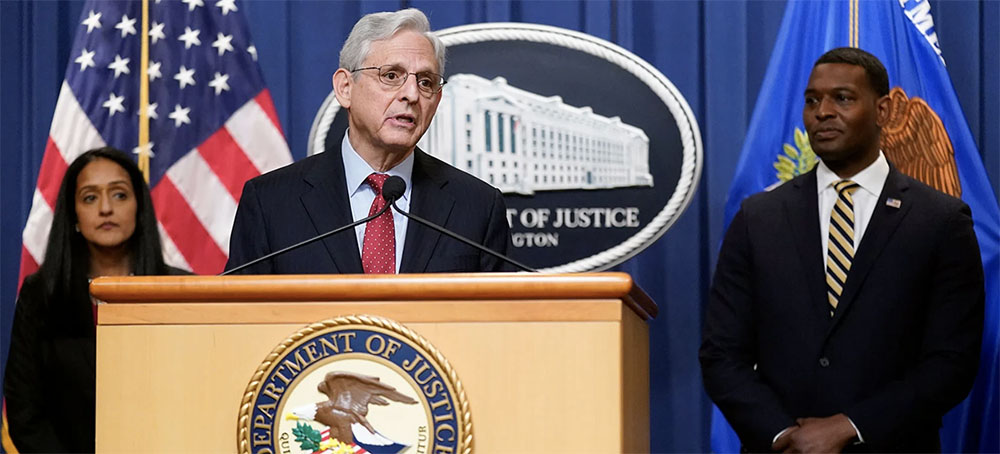Live on the homepage now!
Reader Supported News
Lennon's lawyer Jay Bergen's "Lennon, the Mobster, & the Lawyer" is a legal page-turner
It is incredible to contemplate the sheer amount of time that John Lennon spent with various legal cases taking up his headspace, the most prominent of which was surely his longstanding immigration case. Lennon existed in public life for some 17 years, with fully a third of it living in fear of being deported from the United States. He had landed on President Richard M. Nixon's notorious enemies list, which resulted in years of legal entanglements for the former Beatle as he fought to stay in the country. Fortunately, Lennon prevailed, earning his coveted Green Card in July 1976.
But that's another story. In "Lennon, the Mobster, … the Lawyer," Bergen focuses on Lennon's other case, his intellectual property dispute with Morris Levy, the publisher of Chuck Berry's "You Can't Catch Me." Lennon had lifted a key lyric from the song for Abbey Road's "Come Together." As with his one-time songwriting partner Paul McCartney, who described the Beatles as "plagiarists extraordinaires," Lennon quipped that "the trick is to steal from the best." When it came to Levy, John was initially forced to settle the lawsuit out of court, promising to record three tunes from Levy's back catalog as recompense.
But it didn't end there, of course. In the meantime, Lennon set to work on an oldies LP that went under the working title of "Back to Mono." Eventually released as "Rock 'n' Roll," Lennon's throwback album became its own saga when Phil Spector absconded with the album's master tapes. Capitol Records paid some $90,000 in ransom to the eccentric producer for their return.
Meanwhile, impatient with Lennon over the disposition of the out-of-court settlement, Levy marketed a television mail-order version of the album's rough mix, which the ex-Beatle had inadvisably shared with him, entitled "Roots: John Lennon Sings the Rock 'n' Roll Hits" and released on the Adam VIII label.
Here's the TV commercial for "Roots":
In fascinating detail, Bergen's book traces the story of Capitol Records' subsequent lawsuit against Levy. The behind-the-scenes tale of having a legendary client of Lennon's ilk makes for a riveting read, to be sure, but Bergen's narrative hits even higher notes as he paints a picture of music's ties to the Mafia and the ways in which folks like Levy would exploit the threat of a federal case as a backroom shakedown.
Beatles fans — and Lennon aficionados in particular — will revel in John's descriptions of the musician's approach to the recording process, which Bergen skillfully redeployed in his courtroom strategy. The book offers a powerful glimpse into the seamy side of 1970s rock 'n' roll, a time capsule-like rendering of a bygone age. Bergen's "Lennon, the Mobster, … the Lawyer" is not to be missed.
 On Monday morning, Putin sought to justify his invasion of Ukraine, tying the current fighting to the Soviet victory in the second world war. (photo: Getty Images)
On Monday morning, Putin sought to justify his invasion of Ukraine, tying the current fighting to the Soviet victory in the second world war. (photo: Getty Images)
Articles published on Lenta.ru on Victory Day accuse Putin of waging ‘bloodiest war of 21st century’
The articles on Lenta.ru called President Vladimir Putin a “pitiful paranoid dictator” and accused him of waging “the bloodiest war of the 21st century”.
“We had to do it today. We wanted to remind everyone what our grandfathers really fought for on this beautiful Victory Day – for peace,” said 30-year-old Egor Polyakov, one of the two journalists.
During his annual speech in front of 11,000 soldiers in the Kremlin on Monday morning, Putin sought to justify his invasion of Ukraine, tying the current fighting to the Soviet victory in the second world war.
“This is not what Victory Day is about,” Polyakov told the Guardian in an interview. “Ordinary people are dying, peaceful women and children are dying in Ukraine. Given the rhetoric that we have seen, this isn’t going to stop. We couldn’t accept this any longer. This was the only right thing we could do.”
Polyakov, who works as a business reporter at Lenta, said he and his colleague Alexandra Miroshnikova published more than 40 articles critical of the Kremlin and its actions in Ukraine. The articles have since been taken down, but can be accessed through a web archive tool.
Lenta, one of the largest sites in the country with more than 200 million monthly visitors, has been part of the relentless propaganda machine used to justify Russia’s invasion of Ukraine. Lenta is owned by Rambler, a media group that was bought in 2020 by Sberbank, Russia’s largest bank, which is state-owned and under US and UK sanctions.
Titles on the articles written and published by Polyakov and Miroshnikova on Monday morning included “Vladimir Putin lied about Russia’s plans in Ukraine”, “The Russian army turned out to be an army of thieves and looters” and “Russia abandons the dead bodies of its troops in Ukraine.”
Polyakov said each article was sourced from “information available online”, which he said he was usually not allowed to use given the outlet’s “editorial position” and strict censorship rules that in effect criminalise independent reporting.
Polyakov and Miroshkina also published a personal letter on the website, which urged readers: “Don’t be afraid! Don’t be silent! Fight back! You are not alone, there are many of us! The future is ours!”
It is the first major act of protest seen in Russian state media since Marina Ovsyannikova, an editor at Channel One, broke on to the set of the nightly news in mid-March shouting: “Stop the war. No to war.”
Pointing to recent laws introduced by Russia aimed at stifling anti-war dissent, Polyakov said he was now “worried” for his safety. Russia has passed a number of laws making the spread of “fake” information about the Russian army an offence punishable with fines or jail terms of up to 15 years. Russian authorities have already charged 46 people under such laws, with 14 of them now behind bars.
“Of course I am afraid,” Polyakov said. “I am not ashamed to admit that. But I knew what I was doing, what the consequences could be.”
In a separate development, the Rutube video platform was taken down by pro-Ukrainian hackers on Sunday night, while local television menus were hacked, with programme descriptions on smart TVs replaced by a message reading: “The blood of thousands of Ukrainians and hundreds of murdered children is on your hands. TV and the authorities are lying. No to war.”
State outlets have frequently been targeted by pro-Ukrainian hackers since the start of the war.
 'I refuse to enforce this draconian law,' Michigan Attorney General Dana Nessel said of her state's 1931 ban on abortion. She's seen here in 2020. (photo: David Eggert/AP)
'I refuse to enforce this draconian law,' Michigan Attorney General Dana Nessel said of her state's 1931 ban on abortion. She's seen here in 2020. (photo: David Eggert/AP)
"I'm very hopeful," Nessel said on NBC's Meet the Press, that Michigan's Supreme Court will find the right to an abortion is assured by the state constitution's equal protection and due process clauses — "even if the United States Supreme Court decides otherwise."
The state law is 'draconian,' attorney general says
Michigan's 1931 law defined abortion as a felony. It came under attack by its own government last month, when Gov. Gretchen Whitmer sued to vacate the ban. The push quickly gained new urgency after a draft opinion leaked that would overturn the landmark Roe v. Wade ruling on abortion rights.
If the Supreme Court overturns its abortion ruling, Michigan's law would again take effect, making it illegal to perform abortions in many circumstances, including in cases of rape and incest. The law also forbids using drugs to induce an abortion.
"I refuse to enforce this draconian law," Nessel said, adding later, "It's a really scary set of circumstances for women here in Michigan."
Nessel says she's concerned it could have a chilling effect on doctors' willingness to perform procedures on people whose pregnancies are no longer viable, out of fear they'd be be exposed to potential charges.
"You won't have basic medical health care that is required for women not to have extreme health problems or even die," she said. "Doctors simply are not going to perform those procedures anymore because they don't want to go to prison for it."
Politicians should stay out of medical decisions, Nessel says
Nessel has spoken out against Michigan's law several times since the draft opinion leaked. She also says she herself underwent a procedure that would likely be considered illegal under the state's law. At the time, she was pregnant with triplets — but they weren't developing as they should.
"And I was told very, very specifically that there was no way that all three would make it to term...But if I aborted one, that it was possible that the other two might live. ...I took my doctor's advice... And you know what? It turned out that he was right. And now I have two beautiful sons."
Republicans' attempts to ban abortion are out of step with what the public wants, Nessel said. A recent Pew Research Center poll showed that about six in 10 Americans favor legal abortion in all or most cases.
She also noted that earlier on Sunday's program, Mississippi Gov. Tate Reeves, a Republican, refused to say whether he would sign legislation banning contraceptives, if such a measure were to reach his desk.
"That is not in line at all with how Americans see their rights," Nessel said. "And politicians do not belong in our doctor's offices. They don't belong in our bedrooms, and they should not be making these kinds of decisions on behalf of the American public and on behalf of women across America."
Even if Michigan's high court strikes down the 1931 law, Nessel said, abortion rights should be codified into the state constitution. A petition drive is currently underway in Michigan to put a reproductive rights amendment on the ballot for this November's election.
 A border activist leaves water in the desert in Altar Valley, Ariz., on January 24, 2020. (photo: Andrew Lichtenstein/Corbis/Getty Images)
A border activist leaves water in the desert in Altar Valley, Ariz., on January 24, 2020. (photo: Andrew Lichtenstein/Corbis/Getty Images)
With record levels of migrants perishing in the desert, border agents are flouting a new law requiring tallies of the dead.
The Government Accountability Office, in a little-noticed report released late last month, informed lawmakers that the Border Patrol “has not collected and recorded, or reported to Congress, complete data on migrant deaths.” The omission included data the Border Patrol was required to track and turn over under legislation passed last year. The law specifically obligates the agency to include data collected by entities other than the Border Patrol itself in its reports on migrant deaths. The failings mark the first public government assessment of the agency’s response to the new legal requirements.
“It confirms something that we suspected for a long time,” Daniel Martínez, an associate professor at the University of Arizona and one of the world’s leading experts on migrant deaths in the Sonoran Desert, told The Intercept. “We’ve known this for a while — that the Border Patrol is not doing an effective job of counting the dead.”
The report to Congress focused heavily on the Border Patrol’s Tucson Sector; in recent years, major discrepancies have emerged between the agency’s data and that of the local medical examiner’s office.
Martínez and his colleagues at the University of Arizona’s Binational Migration Institute highlighted those discrepancies in an extensive report published last spring. The academics’ report looked at three decades of migrant death data collected by the Tucson-based Pima County Office of the Medical Examiner — which has jurisdiction in five southern counties — and compared it against similar data collected by the local Border Patrol sector.
The researchers found that throughout the early to mid-2000s the two datasets closely mirrored one another. The Border Patrol’s numbers even frequently exceeded those of the medical examiner’s office — not a surprise, since the Tucson Sector covers nearly all of Arizona. Then in 2014, the tallies began sharply diverging, with the Border Patrol reporting far fewer migrant deaths. In the 2020 fiscal year, for example, the medical examiner documented the recovery of 206 sets of migrant remains across the scorching Sonoran Desert, the highest total in a decade. The Tucson Sector of the Border Patrol, which covers the same stretch of the border as the medical examiner, recorded just 42.
Overall, from fiscal years 2014 through 2020, the medical examiner’s office counted 855 suspected migrant remains recovered. The Border Patrol’s Tucson Sector counted 488. It was an indication that the Border Patrol had shifted to only tracking cases in which its own agents discovered migrant remains, while the medical examiner’s office counted Border Patrol recoveries in addition to those made by a wider group of actors in the Sonoran Desert, including local law enforcement agencies, humanitarian groups, and private citizens.
The GAO found the medical examiner’s data “sufficiently reliable for reporting the number of migrant deaths in the Tucson sector” and interviewed local Border Patrol officials about the years of discrepancies. The officials blamed “confusion as to the definitions of deaths and rescues” and “supervisor turnover” for its gaps in record-keeping. Agents consult the medical examiner’s data for “overall situational awareness,” officials told the GAO, but they do not update their agency’s internal system for tracking migrant deaths when they are reported by the medical examiner’s office, as required by law. (Customs and Border Protection, the parent agency of the Border Patrol, did not respond to a detailed request for comment.)
The GAO’s report comes as spring is turning to summer, historically the most lethal months for migrants crossing the border — last year was Arizona’s deadliest on record.
“As far as I’m concerned, Border Patrol data are not reliable,” Martínez said. “And that’s a huge problem, especially if policymakers are relying on their data to make decisions.”
Over the past two decades, an estimated 8,000 to 10,000 people have lost their lives crossing the southern border, though the true number is impossible to know due years of spotty record-keeping on the part of the nation’s premiere border enforcement agency and its local law enforcement partners. The Missing Persons and Unidentified Remains Act, a rare piece of bipartisan border legislation signed into law in the final days of the Trump administration, was supposed to change that.
Under the law, the Border Patrol’s legal obligations are clear: When a migrant’s body is found on the U.S.-Mexico divide, the agency is required to document the discovery, no matter who made the initial encounter. According to the GAO, that has not happened.
“Specifically, Border Patrol’s fiscal year 2020 report to Congress did not contain complete data because the agency did not record all available information on migrant deaths from external entities in its system of record, or describe these data limitations in the report,” the GAO report said. “In particular, Border Patrol is not recording all migrant deaths in instances where an external entity first discovers the remains.”
Funneling migrants into “hostile terrain” is the core feature of a Border Patrol enforcement strategy known as “prevention through deterrence.” Implemented in 1994 under the Clinton administration, the original idea was to push people into areas so rugged and deadly — while at the same time bolstering surveillance and interdiction infrastructure around major border cities — that they would not cross the border without authorization under fear of death.
Two and a half decades later, the strategy has fostered a flourishing human smuggling economy and transformed the U.S.-Mexico divide into the deadliest border in the Western Hemisphere. According to the GAO, “Border Patrol agents along the southwest border report that 9-1-1 calls from lost individuals have become a daily occurrence.”
The GAO had good reason to examine the Border Patrol’s Tucson Sector, Martínez explained, not because the area is uniquely better or worse than its counterparts, but because the medical examiner’s office in Tucson represents the “gold standard when it comes to investigating border-crosser deaths.”
Nearly all of Southern Arizona’s border runs through public lands, unlike South Texas, where the divide often cuts through vast private ranches. Additionally, Tucson is a large city, whereas the counties of South Texas include some of the most impoverished districts in the country. Borderwide, these local differences in access and resources directly inform how migrant bodies are found and accounted for. When it comes to tallying the dead, the GAO found, inconsistency reigns.
“Border Patrol sector officials from the four sectors we contacted told us that they coordinate with external entities — such as medical examiners— when remains are discovered,” the report said. “However, Border Patrol sectors we contacted are not consistently recording the data as required.”
What Martínez found most perplexing was why the Border Patrol’s Tucson Sector suddenly began undercounting migrant deaths in 2014. Bureaucratic breakdowns and confusion over the definition of migrant deaths fail to fully explain the shift, he argued, and they certainly do not excuse failure to meet legal obligations and provide reliable migrant death data to Congress.
“These data are clearly here. If Border Patrol of the Tucson Sector or the Border Patrol want the data, they can go into Pima County Office of Medical Examiner and get those data,” Martínez said. “I know that Pima County Office of Medical Examiner routinely provides the Tucson Sector with these data.”
The deadliest year that the medical examiner in Tucson ever recorded was in 2021, with 226 sets of human remains recovered. Border Patrol officials and news reports attributed the deaths to the state’s soaring temperatures and in some cases to the climate crisis.
The reasoning is understandable, Martínez said, but it obscures important truths about how and why migrants are dying in the desert.
In a paper published in the Geographical Journal in March, Martínez and his University of Arizona colleague Samuel Chambers showed how migrants are increasingly dying of exhaustion upon making it to “locations that are better suited to core temperature regulation, and therefore toward survival.”
High temperatures and the climate crisis, they argued, thus serve as a “moral alibi” for prevention through deterrence doing what it has always done. What’s really killing people in the desert, Martínez said, is an intentionally lethal policy colliding with an ongoing absence of political will and imagination to try something different.
“There are other alternatives besides just increased border enforcement, increased border militarization. There are solutions to undocumented immigration,” he said. “But I think the political will is not there in Washington, D.C. Immigration just becomes this political football that gets punted back and forth between the Democrats and Republicans every time you have a change in administration.”
 Pfizer's income is built on aggressive corporate practices and ruthless profiteering that has led to an obscene inequality in access to COVID-19 vaccines. (photo: Steven Cornfield/Unsplash)
Pfizer's income is built on aggressive corporate practices and ruthless profiteering that has led to an obscene inequality in access to COVID-19 vaccines. (photo: Steven Cornfield/Unsplash)
Pfizer is projected to rake in more than $50 billion from its COVID medicines this year. It’s a symbol of the drastic inequality created by a for-profit approach to global health.
It’s been a good pandemic for a company that was, until recently, the least-trusted company in the least-trusted sector in the United States. Not only has the company made a fortune on its COVID medicines, it’s also become a household name, with a chief executive who moves among the world’s most powerful leaders, toasted by ordinary people across the world who are desperate for this pandemic to be over. It’s been quite the PR coup.
Dig deeper, though, and you quickly find out that Pfizer’s profits are not a justifiable reward for a much-needed solution to an era-defining crisis. Rather, Pfizer’s income is built on aggressive corporate practices and ruthless profiteering that has led to an obscene inequality in access to COVID-19 vaccines, in turn prolonging, rather than ending, this pandemic. Worse, Pfizer isn’t a one-off — it’s just one example among many of an industry that has become a symbol of our highly financialized, monopolistic global economy.
Pandemic Profits
It’s easy to see where Pfizer’s profits come from. Pfizer claims that the cost price of its vaccine is just under £5 per dose, though experts say doses could be made for as little as 76p. Either way, the UK government paid £18 a shot for its first order, £22 for later purchases. Even taking Pfizer at its word, that would mean the National Health Service (NHS) has paid a markup of at least £2 billion — six times the cost of the pay rise the government agreed to give nurses last year. Even this price seems rather reasonable compared to the amount it has been claimed Pfizer tried to charge the US government: an eye-watering $100 a dose, prompting a former US disease prevention official to accuse the firm of “war profiteering.”
Pfizer prides itself on having taken no government money for its vaccine, claiming it plowed its own money into the vaccine’s development. But significant funding for this vaccine did come from the public sector.
Like all mRNA vaccines, Pfizer’s medicine was built on decades of public research. If credit for this particular vaccine goes to any company, it is Pfizer’s partner, BioNTech, a spin-off from a German university center, which was given substantial public funding. Pfizer did put its own money into producing the drug — probably up to $1 billion — but also received guaranteed government contracts of nearly $2 billion in sales for the United States alone. At most, Pfizer’s investment was a small part of the picture and is miniscule compared to the return the corporation has seen. A former US government official bemoaned “it’s not even their vaccine” and describes the fact it’s universally known as the “Pfizer” jab as “the biggest marketing coup in the history of American pharmaceuticals.”
Unfortunately, though, this vaccine is legally Pfizer’s vaccine. Like virtually all important medicines, it was built on public knowledge, but that knowledge was then privatized — handed over to a multinational corporation that can then dictate who can make it, how much it will cost, and who can buy it. Unsurprisingly, Pfizer sold the vast majority of its doses to rich countries and a mere 1.3 percent of its supply to COVAX, the global body set up to try to ensure a more equitable distribution of COVID-19 medicines.
That’s not the worst of it. Pfizer’s monopoly power has prevented others producing, rationing supply purely so they could maintain control of the lifesaving technology. It’s been calculated that over 100 factories and laboratories around the world could have been producing mRNA vaccines if only the technology was shared. But Pfizer has taken a lead in undermining any attempt to share know-how, denouncing a United Nations initiative to pool patents as “nonsense” and “dangerous.”
Even after it had made a fortune, Pfizer refused to share its vaccine with a World Health Organization–backed laboratory in South Africa set up specifically to help lower-income countries build their vaccine capacity. The resulting inequality, shocking in itself, has also given the virus the best possible chance to spread and mutate, potentially undermining the vaccines we’ve got. But what does that matter to Pfizer when in the week after the Omicron variant was discovered, a small handful of their top shareholders added billions of dollars to their wealth as its share price boomed at the prospect of selling even more vaccines.
The Art of Intellectual Property
The monopolies that Pfizer enjoys are hardwired into the rules of the global economy. In the 1980s a handful of corporations, led by a former Pfizer chief executive, recognized that their most important assets were not their factories, their workforces, or even their research base. Rather it was the intellectual property that they sat on — the patents, the know-how, the trademarks. They set about persuading the US government to ensure this intellectual property was as well protected as possible, and in the mid-1990s US-style patents laws were embedded in the newly formed World Trade Organization as a global minimum, undermining the sort of sharing, copying, and imitation of technology that had allowed countries like South Korea to go from poverty to an advanced economy in a generation.
High protection for intellectual property was supposed to encourage innovation and reward the risky business of researching medical breakthroughs. It has had quite the opposite effect. Rather, Big Pharma companies slashed their research and development budgets and focused on buying up research, much of it publicly created, so they could sit on the intellectual property attached to it for decades. A STAT analysis in 2018 concluded that Pfizer developed only a fraction — about 23 percent — of its drugs in-house. Even the research these companies do undertake is often taken up in trying to prolong the lifetime of patents, by making insignificant changes to drugs they already own.
In this way, these firms have become more like hedge funds than research facilities, committed to squeezing every last drop of profit out of their intellectual property. This is great news for Pfizer’s superrich investors. Last week the company proudly announced that during just the first three months of 2022, it has returned $4.2 billion directly to shareholders. Between 2016 and 2020, the figure was around $70 billion — far exceeding the company’s research budget and even exceeding its net income. Pfizer’s CEO, Albert Bourla, boasted that Pfizer was the “most efficient machine to convert raw materials to doses.” It would be more accurate to describe the company as the most efficient machine for converting public resources into shareholder wealth.
Building Something Different
Pfizer has its own special brand of ruthlessness that has led to a string of investigations over the course of the pandemic. The company stands accused of spreading disinformation about the rival Oxford-AstraZeneca vaccine, including funding a study that claimed vaccines like AstraZeneca’s are risky for vulnerable patients and can cause cancer — something there’s zero evidence for — which was then used to misinform health professionals in Canada.
We also know that they made extraordinary demands of countries who wanted to buy their vaccines, demanding complete liability, not just for unexpected side effects, but also negligence, fraud, or malice on the part of the company itself, in some cases demanding governments put up sovereign assets, such as embassy buildings and military bases, as a guarantee against future compensation cases brought against the company. One government negotiator said it felt like being “held to ransom.” Britain even agreed to a special investor arbitration system in its contract with Pfizer, meaning any dispute thatthe British government might have with Pfizer wouldn’t be adjudicated in British courts but in a special tribunal, overseen by corporate lawyers. Pfizer quite literally placed itself above the law of the countries it was selling to.
But while Pfizer is sometimes extreme, the underlying trends are similar across the pharmaceutical sector. Big Pharma is unable to develop the medicines we need at a price we can afford. Yet through global trade rules and a failure to build alternative institutions, we are still dependent on them. The pandemic shows very clearly that we can’t go on like this. We cannot depend for our health care on corporate executives incentivized to maximize their return to shareholders.
The first bit of good news is that we already spend huge amounts of money of medical research. Let’s stop handing it over to Big Pharma condition-free and use it to build a publicly controlled base of knowledge and technology. The second positive is that many Southern countries are already starting to do things differently. The international marketplace has failed them and they’re building factories and labs to develop their own resilience. An outstanding example of this is a new mRNA “hub” in South Africa, which is recreating mRNA technology with a commitment to freely sharing it with producers around the world.
COVID-19 has exposed our monopoly capitalist economy like nothing before. This form of economy cannot protect us from epidemics, from climate change, or from the intrusion of big business into the most personal aspects of our lives. Tearing down the monopolies has become a matter of life and death.
 A Sri Lankan government supporter carries a national flag after attacking the anti-government demonstrators outside the president's office in Colombo, Sri Lanka, on Monday. (photo: Eranga Jayawardena/AP)
A Sri Lankan government supporter carries a national flag after attacking the anti-government demonstrators outside the president's office in Colombo, Sri Lanka, on Monday. (photo: Eranga Jayawardena/AP)
 Merrick Garland. (photo: Patrick Semansky/AP)
Merrick Garland. (photo: Patrick Semansky/AP)
New Justice Dept. office will take on polluters in hard-hit communities
The Department of Justice, or DOJ, is launching its first-ever Office of Environmental Justice, which will coordinate with other federal agencies to bring cases against polluters, prioritizing the communities most affected by environmental harms.
Attorney General Merrick Garland and Environmental Protection Agency, or EPA, Administrator Michael Regan also revealed a new environmental justice strategy and announced that the DOJ will be reinstating an enforcement tool the previous administration had banned.
“Although violations of our environmental laws can happen anywhere, communities of color, Indigenous communities, and low-income communities often bear the brunt of the harm caused by environmental crime, pollution, and climate change,” Garland said at a press conference.
The new environmental justice strategy commits the DOJ to addressing these problems by “vigorously and transparently working to secure environmental justice with the full set of legal tools at its disposal, in partnership with EPA and other federal agencies, and in communication with the communities most affected by the underlying violations of federal law.”
The Office of Environmental Justice will be led by Cynthia Ferguson, an attorney in the department’s Environmental and Natural Resources Division. Ferguson has worked on cases related to environmental justice for more than two decades, Garland said.
In his remarks, Regan highlighted the return of supplemental environmental projects as an enforcement mechanism. These projects allow polluters to fund local initiatives as part of settlements for breaking environmental laws. For example, as part of a settlement for violations of the Clean Air Act, a company could agree to install air filtration systems in local schools. Regan said they were “a tool to secure tangible public health benefits for communities harmed by environmental violations.”
Environmental justice advocates welcomed the announcements from both the DOJ and EPA. In a statement, Jane English, the NAACP’s environmental and climate justice program manager, wrote: “As climate change worsens, it is imperative that our leaders produce real, tangible solutions to protect Black and frontline communities and correct existing and past harms, all while initiating direct law enforcement corrective responses to egregious harms and environmental injustices.”
Special Coverage: Ukraine, A Historic Resistance
READ MORE
Follow us on facebook and twitter!
PO Box 2043 / Citrus Heights, CA 95611



No comments:
Post a Comment
Note: Only a member of this blog may post a comment.